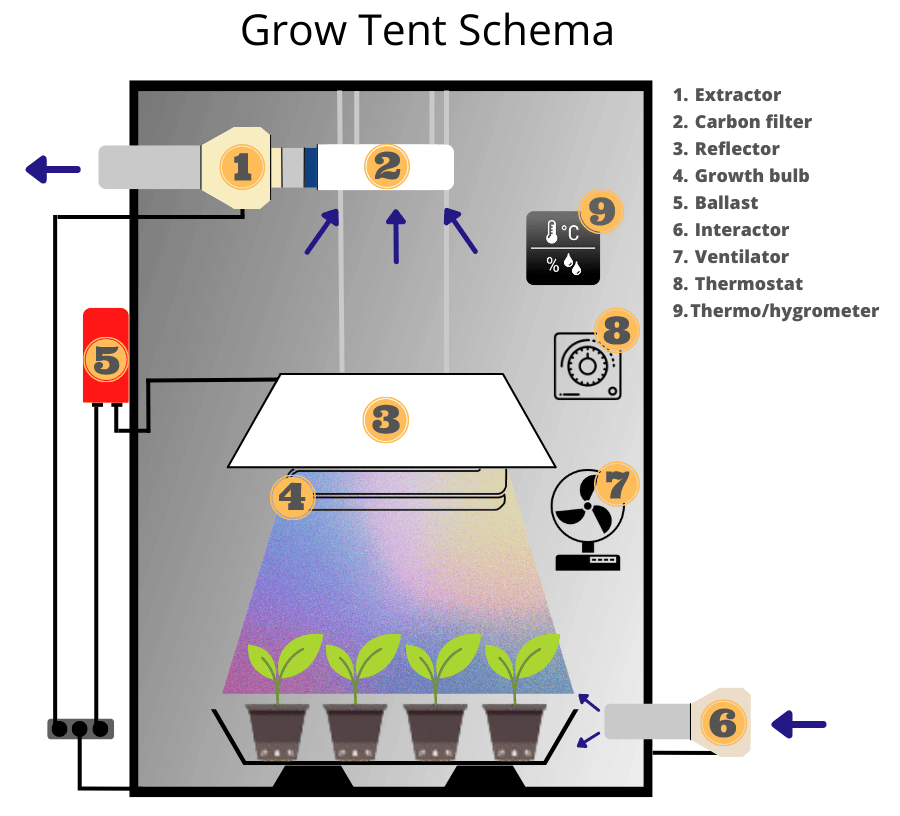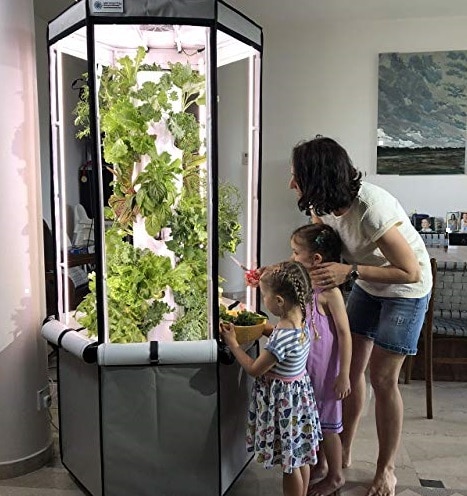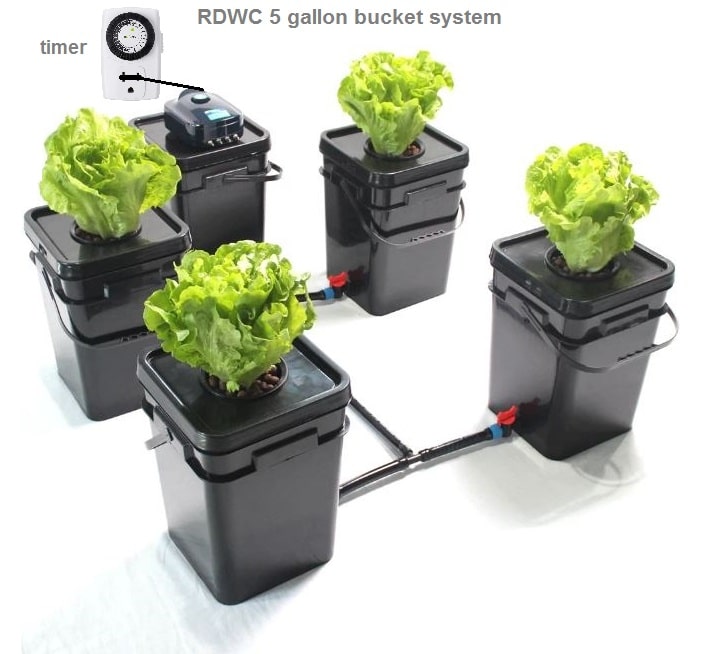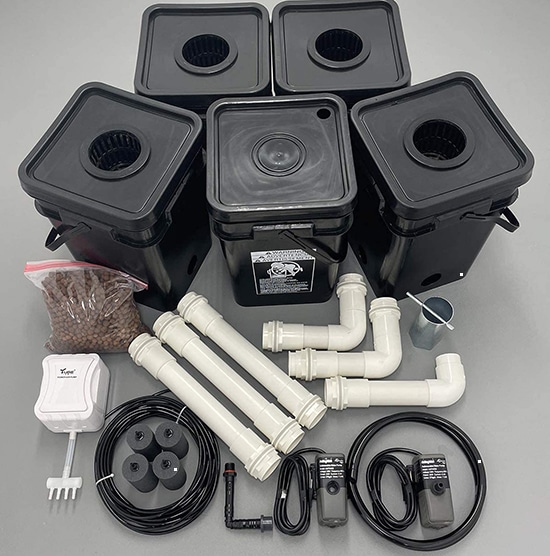Indoor gardening with grow tents allows plant enthusiasts ultimate control over growing conditions while protecting crops in a discreet, dedicated space. Complete grow tent kits provide an all-in-one setup with lighting, ventilation, and other essential components tailored to the tent size. Preconfigured kits optimize yield for the given footprint without guesswork. They take the complexity out of designing an indoor garden from scratch.

When selecting the best grow tent kit, key factors include intended use, size needed, material durability, as well as lighting and climate control requirements. Reflectivity, heat management, mounting configuration, and ease of access matter too. Kits aimed at cannabis cultivation have different considerations than an indoor veggie garden. This guide will illuminate what to prioritize when shopping kits for your needs.
What is a Grow Tent Kit?
A grow tent kit refers to an all-in-one package containing the essential components for an indoor gardening setup tailored to a specific tent size and growing method. Rather than sourcing individual lighting, ventilation and mounting products, a complete kit combines compatible elements purpose-built to work seamlessly together.
Img: Grow Tent Ventilation Diagram or Complete Grow Room Schema with ventilation, lighting, thermometer, timer, and control unit
The centerpiece of any grow kit is the tent itself — available in sizes ranging from compact 2×2′ units up to 5×5′ and beyond for larger scale cultivation. Tents utilize durable, reflective material to maximize light, as well as sturdy frameworks designed for supporting grow lights and related hardware. Most tents feature removable floor trays, observation windows and adjustable ports for venting hot air while sealing in odor.
Beyond the backbone tent structure, grow kits eliminate guesswork by providing lighting and climate control products matched to the space. Reflectors, ballasts and bulbs are professionally rated for that coverage area and tuned to the plants’ growth stages. Oscillating fans, ducting, filters and more tailor temperature and humidity levels. Timers and monitoring tools might also be included.
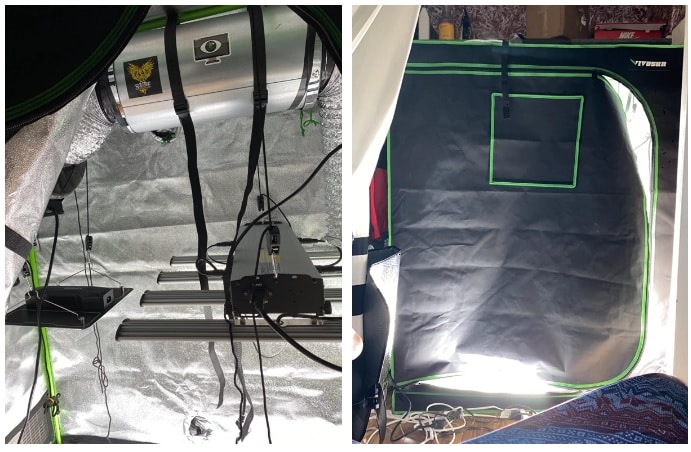
Image 1: Became in the team almost perfect, the dimensions are as written, from the light of the growth lamp, the cloth awning heals perfectly.
By purchasing a one-stop configuration designed around the tent’s parameters specifically, growers save considerable time researching component compatibility. Complete kits offer preset mounting locations, so hardware integrates seamlessly. Simply focus on diligent plant care while the kit’s ecosystem fosters growth behind the scenes, maximizing yield potential.
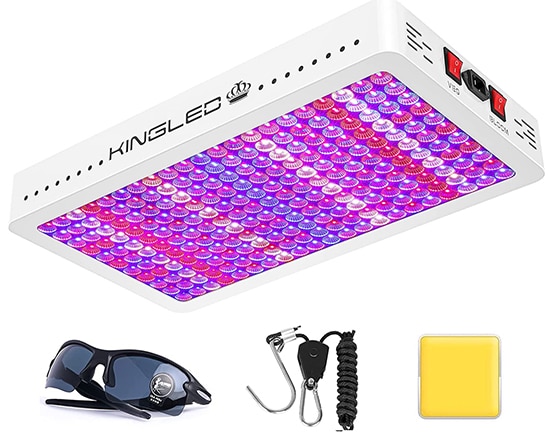 KingLED Newest 3000w LED Grow Lights with LM301B LEDs and 10x Optical Condenser 6x6 ft
KingLED Newest 3000w LED Grow Lights with LM301B LEDs and 10x Optical Condenser 6x6 ft
- Coverage Full Spectrum Grow Lights
- For Indoor Hydroponic Plants Veg Bloom
- 3 years Professional Service and free return for 90 days
Benefits of Buying A Grow Tent Kit
While experienced green thumbs can certainly source all the components for an indoor garden separately, complete grow tent kits offer key advantages even for seasoned growers. As a packaged system tailored specifically to pair with the accompanying tent, all-in-one kits provide optimal convenience and performance that mixes and matches pieces rarely achieve.
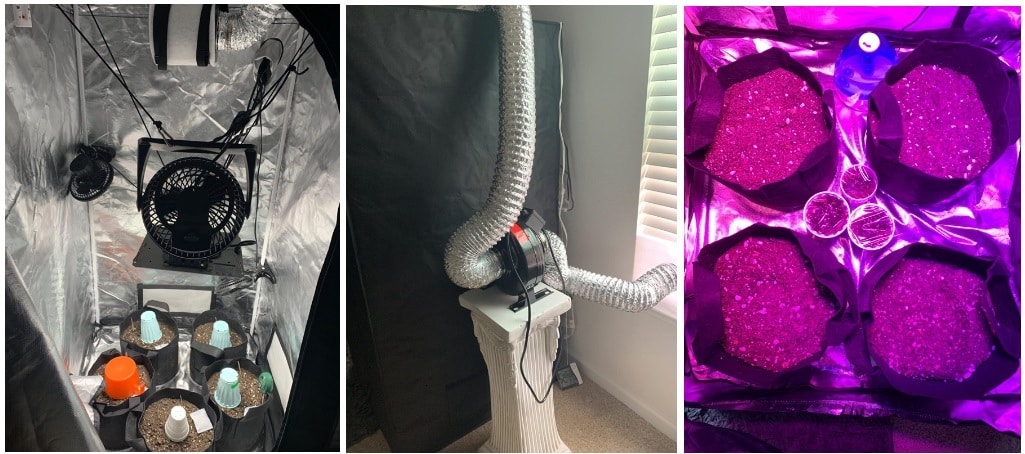
Image 2: Small grow tent kits look at the photo it is enough for 5 bags to grow or a maximum of 8 but then there is nowhere to put a foot on the floor, preferably in addition to the fan stand.
Beyond just saving legwork, integrated grow tent kits leverage harmonized components for the healthiest crops and highest yields from the given space. In addition, they have the following advantages:
- Sufficient Lighting. Complete grow kits include lighting rigorously tested with that specific tent model to deliver full-spectrum illumination matched to the coverage footprint. The wattage chosen accounts for factors like light dispersion and penetration within the enclosure shape and dimensions. The included reflectors, hoods and supplementary lighting then optimize photon delivery to plant sites. Choosing compatible lighting à la carte is challenging; kits perform this automatically.
- Optimized Growing Conditions. Components like fans, ducting, filters and more synchronize in a tent kit to create ideal growing conditions for the tent interior. For instance, airflow patterns minimize disease vulnerability yet don’t dry out plants. Automated humidifiers engage only when ventilation could over-dry. Inline odor scrubbers prevent smells but don’t impede circulation. Tailored microclimates foster success.
- Improved Plant Growth. With lighting, humidity, nutrients and more scientifically dialed-in, grow kits enable plants to focus energy on vigorous growth and abundant fruiting rather than adapting to stress. Peppers thrive in hot tents suited to their preferences. Lettuce spreads under cooler configurations, better for leafy greens. Predetermined balance unlocks genetics.
- Precise Climate Control. The monitoring tools and automated adjustments in complete kits maintain temperatures, humidity levels and more at optimal set points for the full plant lifecycle without daily tinkering. Programmable controllers make lighting and equipment height changes on schedule. Growers simply check nutrient solutions while gear runs the calibrated climate.
- Improved Ventilation. Dedicated inlet and outlet ports woven through the framework circulate fresh CO2 while venting hot, moist old air efficiently. Ducting routes through filters avoiding light leaks yet ventilates twice per minute. Large fans would warp smaller tents yet mini fans restrict big ones; kits have ideal fans.
- Odor and Insect Proof. Kits include carbon filtration that traps odors without choking airflow, while durable zippers, seals and floors keep insects and pests out without harming circulation needed inside. Observation windows allow checking plants without upsetting carefully crafted conditions by constantly opening tents.
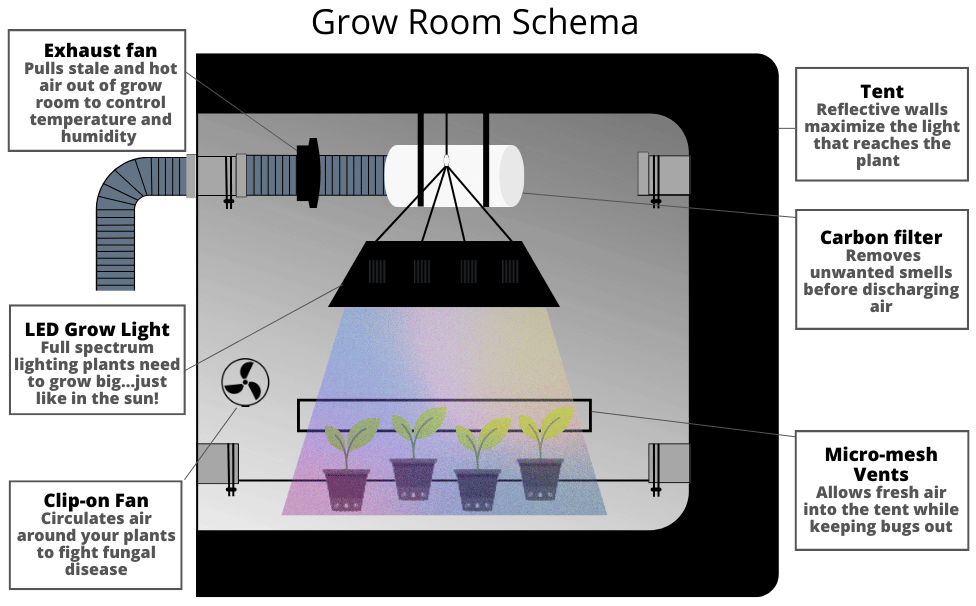
Grow Tent Drawbacks
While complete grow tent kits solve many of the challenges of designing an indoor garden from scratch, they still come with inherent drawbacks to weigh. As enclosed systems, issues like odor control, heat management, humidity regulation and accessibility cannot be entirely eliminated — only mitigated through thoughtful tent selection and diligent maintenance of the controlled ecosystem within.
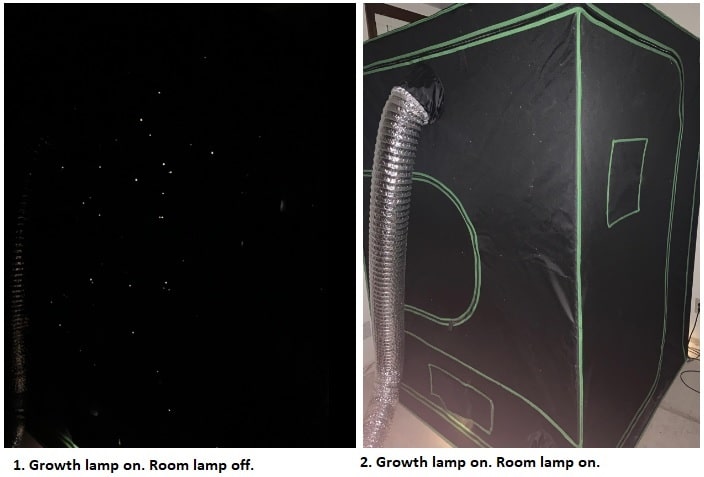
Image 3: indoor grow tent kit tested for light transmission from the grow lights. it’s ok for me.
In addition, consider the following points:
- Heat Management. Grow tents inherently run hotter than open rooms due to focused lighting and restricted airflow. Ventilation systems work to dissipate heat yet sealed tents limit natural convection. Supplemental air conditioning may be necessary in hot climates, adding to electricity costs. Monitoring interior temperatures frequently prevents lethal overheating.
- Contained Odors. Even premium filtration systems don’t eliminate all odors; tents can amplify smells by enclosing the source. Negative pressure from ventilation creates additional air leaks around zippers that scrubbers must overcome. Stronger smells demand exhaust fans pulling air through greater filter carbon density. A separate lung room adds insurance.
- Limited Vertical Height. Standard tent frameworks offer six to eight feet of height for lighting and hardware positioning. While adequate for many plants, vertically vining fruits and vegetables eventually outgrow this if unsupported. Robust staking, trellising and training techniques allow maximizing upward growth potential within tents. Plan crop selection carefully around mature sizes.
- Insect Susceptibility. While tents themselves seal tightly against garden pests, every entry still risks admitting infestations unless implementing stringent precautions. Foot baths, plant quarantines and stringent inspection minimize risks yet don’t eliminate them. Early detection through routine monitoring is critical to avoiding tent-wide crop failures.
- Equipment Maintenance. Centralizing essential plant support systems within a dedicated tent certainly makes maintaining ideal conditions convenient yet also intensifies consequences if hardware fails. Redundant fans, backup power, and quick-replacement bulbs hedge risks of losing an entire tent’s plants to one broken component. System health requires vigilant stewardship.
Types of Grow Tents
Grow tents are available in a diverse range of sizes, shapes and configurations to suit a variety of planting needs and space considerations. While the purpose remains fundamentally the same — creating a contained, reflective chamber for controlling indoor garden conditions — the types and models of grow tents vary greatly. The grow tent components included, form factor to install, as well as lighting and accessory compatibility all differ among popular grow tent alternatives.
Soil Tent Kits
Growing plants in small spaces can be challenging, but soil tent kits provide an innovative solution. These tents create a miniature greenhouse environment optimized for plant growth, while taking up minimal floor space. Soil tent kits come equipped with strong, flexible plastic or fabric tent materials that diffuse light evenly over your plants. Tents feature ventilation flaps to allow airflow and adjustable openings for easy access.
Kits include nutrient-rich potting mix formulated specifically for containers and tents. This soil strikes an ideal balance of drainage, moisture retention, and aeration. Some kits also provide starter plugs or seed packets so you can begin growing immediately. Once set up, soil tents offer a controlled microclimate with warmer, more humid air surrounding the plant. This accelerated environment boosts photosynthesis and growth rate. The enclosed space also protects seedlings and mature plants from pests.
Hydroponic Tent Kits

Image 4: The indoor grow tent kit from CoolGrows has a better light hold than the previous one, quality stitching, two inspection windows with shutters, a frame is good and sturdy.
Hydroponic tent kits take indoor gardening to the next level. These complete systems let you grow fruits, veggies, herbs, and flowers without soil right in your home. Hydroponics involves growing plants in nutrient-rich water rather than dirt. This method delivers nutrients directly to the roots for faster growth and larger yields than traditional gardening. Plants also tend to be healthier overall when grown hydroponically.
Tent kits provide an enclosed chamber that creates the perfect controlled environment for hydroponics. They utilize grow lights that mimic natural sunlight patterns to nurture growth. High-power LED bulbs deliver the full light spectrum plants need at various stages. These kits include durable waterproof tents with reflective interior walls to maximize light exposure. Adjustable ventilation ports and fans maintain ideal air circulation and temperature.
The hydroponic system features reservoirs or troughs to hold the nutrient solution, as well as beds, nets, towers, or other structures to support plants. Kits also provide non-GMO seeds or seedlings across many varieties to get you started.
How To Choose the Right Grow Tent Kit?
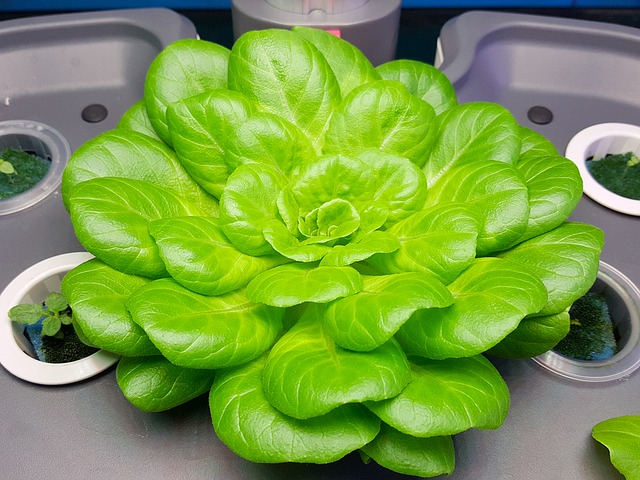
With so many different grow tent kits on the market, it can be tricky to determine which option is right for your needs. When selecting an indoor gardening setup, there are a few key factors to consider so you can create the ideal growing environment.
In this section, we’ll walk through the components to evaluate when deciding on a tent kit for your space and planting goals. Taking stock of critical variables like size, materials, lighting power, and tent features will ensure you pick the perfect system to support your garden’s success.
Tent Specifications
The size and structure of your grow tent are foundational aspects that facilitate the controlled environment that plants need to thrive. Evaluate the tent’s dimensions and layout to ensure adequate space for your chosen growing method and crop load. Standard grow tent sizes range from 2’x2’ for miniature setups, up to 10’x10’ for larger-scale gardens. Height is also key — opt for tents at least 5–6 feet tall to accommodate mature plants and lighting equipment.
The tent’s frame should feature sturdy metal poles that won’t warp or collapse. Waterproof floor trays prevent leaks and messes. Reflective interior wall linings amplify light diffusion for more even coverage across the canopy. Multiple ventilation ports with closures allow adjustment of airflow. Look for durable outer materials like canvas that have a lightproof backing to contain the grow light’s glow.
Grow Light Type
The grow light system serves as the sun substitute that fuels plants’ photosynthesis and growth cycles. Full spectrum LED grow lights are the gold standard, providing intense brightness across red, blue, orange, UV and infrared wavelengths. Compare wattage to determine the coverage footprint and penetration power — go for at least 30w per square foot of canopy. Higher wattage accelerate fruiting and flowering. Ensure the LED panel is designed specifically for indoor plant growth, with dimming functions to customize intensity.
For larger spaces, High Pressure Sodium (HPS) and Metal Halide (MH) grow lights offer trusted performance. Use MH bulbs for leafy greens and vegetative growth, switching to HPS once plants bloom. These lights emit more heat than LEDs, but are more affordable initially. No matter the light tech, the tent kit should position lamps at an optimal height over the canopy and include power cords/ballasts.
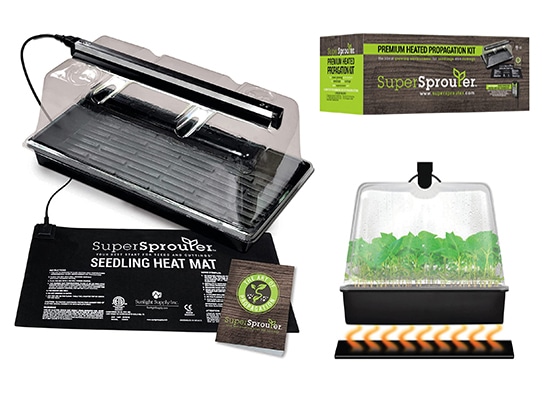 Super Sprouter Premium Propagation Kit with Heat Mat, 10
Super Sprouter Premium Propagation Kit with Heat Mat, 10
- Dome & T5 Light, 5 Piece, Black/Clear
- Art of Propagation booklet with expert advice for starting seedlings and cuttings
- Super Sprouter Seedling Heat Mat 10 in x 21 in is ETL listed
Inline Fans
Proper air circulation is vital for managing temperature, humidity, and ventilation inside grow tents. Inline fans connect to ducting that removes hot air and brings in fresh CO2. Compare CFM (cubic feet per minute) ratings to size fans for tent volume — calculate to exchange all interior air every 1–3 minutes. Higher speeds prevent issues like mold, fungi, and overheating. Look for variable speed settings and quiet operation.
Ensure the tent kit includes ports to install ducting and equipment like inline fans. The fan should vent hot air outside the tent into the surrounding room or outdoors. Kits should have clamps, cords, and adapters for seamless ducting. Place your exhaust fan at the top corner of the tent to pull rising hot air out. Opposite sidewall vents draw in fresh air naturally. This circular flow promotes healthy airflow across all sites. Monitor conditions with a hygrometer.
Accessories
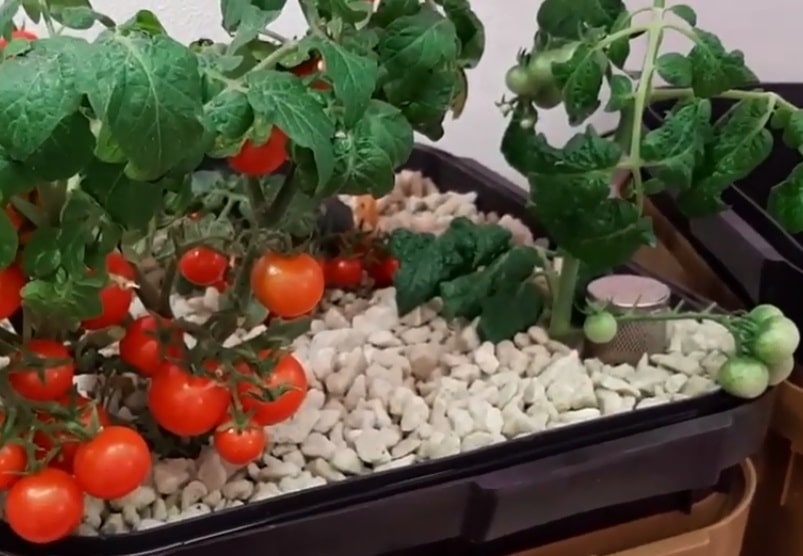
The advantage of complete grow tent kits is they package essential accessories together. This supplementary gear enhances functionality to help your garden thrive. Most kits include hanging bars, straps or racks to suspend grow lights and mount filters. Waterproof pool liners guard floors and walls. Humidity domes protect seedlings while preserving moisture.
Timers automate lighting schedules and equipment runtime. Nutrient tank monitors prevent water quality issues. CO2 supplementation tanks boost carbon fuel for photosynthesis. Trellis nets support stalks and colas for healthier, heavier yields. Shovels, shears, and gloves assist harvest and care. Whether basics like drip trays or advanced add-ons like thermometers, the right accessories simplify success.
 Bluelab MONGUA Monitor for pH, Temperature, Conductivity (TDS)
Bluelab MONGUA Monitor for pH, Temperature, Conductivity (TDS)
- For pH, Temperature, Conductivity (TDS)
- Rogers finest 3 in 1 Meter
- Ph meter for water hydroponics
What are the Best Grow Tent Kits in 2023?
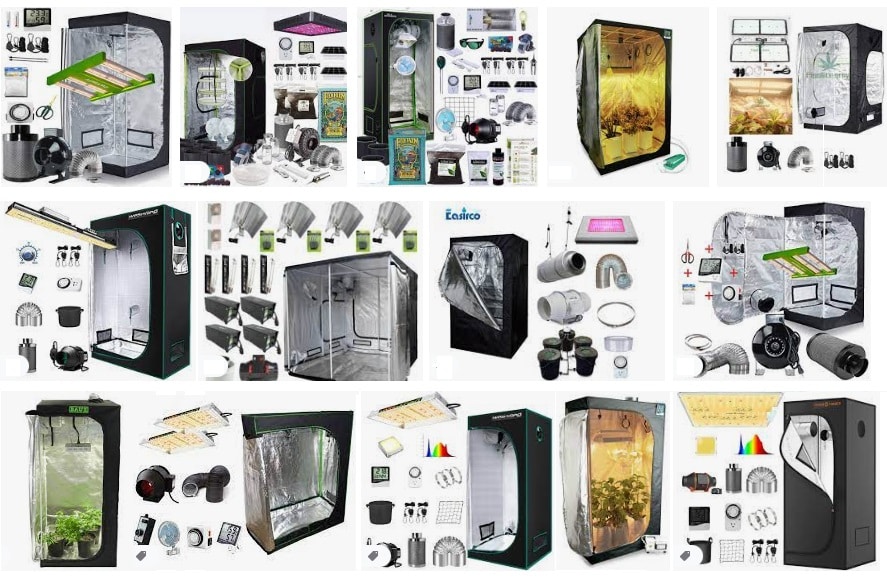
With so many grow tent options on the market, it can be hard to determine the best kits to suit your gardening needs. In this section, we’ll highlight the top-rated all-in-one tent kits that comprise everything you need to cultivate thriving indoor gardens right out of the box. We’ve researched the leading equipment brands and models, evaluating critical components like light power, tent durability, airflow systems, and extra features.
Best Choice  | VIVOSUN Hydroponic Grow Tent
| Check Price |
Best Two Plant  | VIVOSUN 2-in-1 Grow Tent
| Check Price |
Best Observation  | MARS HYDRO 2×2 Grow Tent Kit for New Grower
| Check Price |
Best Small  | VIVOSUN Grow Tent Complete System
| Check Price |
Best Value  | IPOW Grow Tent Kit Complete System
| Check Price |
VIVOSUN Hydroponic Grow Tent

Indoor gardening enthusiasts can create a controlled environment for raising robust hydroponic plants and maximizing yields with VIVOSUN’s Hydroponic Grow Tent line. This innovative solution allows you to transform any spare room into a productive hydroponic grow space thanks to its light-proof, reflective tent design.
VIVOSUN’s enclosed tents utilize durable metal poles to construct a stable frame and thick 600D canvas fabric walls that effectively contain heat, light, and humidity as needed for hydroponic growing setups. The non-toxic Mylar lining covering interior walls reflects up to 97% of light to prevent leakage and maximize light efficiency resulting in faster plant growth. Multiple intake/exhaust ports and mesh vents allow for customized climate control configurations.
Choose from grow tents sized from 2’x2’ up to 10’x20’ to match your available space and desired plant capacity. Sturdy tool-free installation and foldable design allow flexible rearrangement to accommodate indoor garden expansion. Available accessories like hanging bars, filters, and trays facilitate customizable hydroponic system creation within your all-in-one grow station.
With their turnkey lightproof enclosures and highly reflective interiors, VIVOSUN’s Hydroponic Grow Tents provide the optimal all-in-one indoor environment for hydroponic systems, enabling gardeners to yield bigger, better plants all year round!
| Pros | Cons |
|---|---|
| Lightproof tent controls grow environment | More expensive than generic poly tents |
| Durable metal & thick 600D canvas material | Heating/cooling equipment sold separately |
| Highly reflective Mylar lining (97% reflectivity) | May need added humidity control |
| Multiple intake/exhaust ports for ventilation | Intakes allow some light and odor escape |
| Available sizes from 2' x 2' up to 10' x 20' | |
| Tool-free installation and foldable design | |
| Sturdy construction withstands equipment | |
| Control humidity, light, temp for hydroponics | |
| Increase yields with optimized conditions | |
| Facilitates custom hydroponic setups | |
| Accessory bars, filters, trays available |
VIVOSUN 2-in-1 Grow Tent

The innovative new VIVOSUN 2-in-1 Grow Tent design enables growers to house two isolated grow chambers within a single tent structure, allowing cultivation of different plant varieties in uniquely customized environments.
This cutting edge grow tent couples two fully lightproof grow rooms in one tent separated by a thick ultra-reflective dividing wall. Each chamber can be independently controlled for lighting, humidity, airflow and other critical growing factors to optimize two distinctive grow operations like propagation, vegetative growth or flowering.
The 2-in-1 tent consists of two rooms each 4’ x 4’ x 6.5’ (LxWxH) constructed using super solid metal poles and extremely reflective Mylar lining to facilitate robust plant growth. The dual chamber design facilitates discrete quarantine of male plants or create unique growing conditions for exotic fruit hybrids, bonsai trees and more.
Additionally, integrated observation windows and access ports between chambers as well as individual chamber access doors allow convenient monitoring and plant maintenance as needed while minimizing disruptive light exposure.
VIVOSUN’s revolutionary 2-in-1 Grow Tent design enables gardeners to leverage one tent into a multi-chamber grow house facilitating tandem discrete plant cultivation that’s customizable down to precise conditions within each isolated room! Discover the possibilities.
| Pros | Cons |
|---|---|
| Two grow rooms in one tent | More expensive than standard grow tents |
| Separate environments for each chamber | Divider can limit flexibility of layouts |
| Optimized conditions for different plants | Separate equipment needed for each room |
| Thick reflective divider between rooms | Individual access doors can impact stability |
| Adjust lighting, humidity, temps per room | |
| 4'x4'x6.5' rooms fit most setups | |
| Observation windows to monitor plants | |
| Ports and doors minimize light disruption | |
| Facilitates propagation and flowering | |
| Quarantine male/female plants | |
| Super solid metal frame construction | |
| Durable thick canvas and reflective walls |
MARS HYDRO 2×2 Grow Tent Kit for New Grower

The MARS HYDRO 2×2 Grow Tent Bundle delivers the essential elements for a flourishing indoor garden at a budget-friendly price point. Ideal for first-time growers, this mini setup features a compact 2’x2’x5’ high performance tent paired with a 300 watt LED grow light.
This bundle includes the ventilation system, hanging bars, fans, filters and 5-gallon cultivation pots to establish an optimized enclosed growing environment. MARS HYDRO’s bright 300W full spectrum LED panel contains UV and IR diodes to stimulate plant growth and fruiting through the complete lifecycle. An automated timer adjusts illumination schedules from seedling to harvest.
The lightweight mylar interior of the 1680D canvas tent is water-resistant, tear-proof and highly reflective to maximize light exposure. Large observation windows and doors allow easy access for tending your garden. This kit sets up in minutes without tools for 16 square feet of growing capacity. For growers with limited space, MARS HYDRO’s 2×2 bundle simplifies indoor gardening.
| Pros | Cons |
|---|---|
| Complete starter bundle under $250 | Low ceiling height, under 6 feet |
| Compact 16 square foot tent | Smaller footprint limits plant count |
| 300 watt energy efficient LED | |
| Automated timer included | |
| Easy 5 minute tool-free setup |
VIVOSUN Grow Tent Complete System

If you want the best value in an all-inclusive indoor growing kit, look no further than VIVOSUN’s 3’x3′ grow tent system. This space-saving setup comes fully stocked with a 640 watt LED light with side output filter fans and vents for optimized temperature and humidity regulation.
The durable steel frame tent is lined with 98% reflective mylar for maximum light exposure and features hassle-free tool-free assembly. The 640 watt full spectrum LED lamp delivers uniform coverage across 3’x3′ for fruiting, flowering and vegetative growth phases with brightness dimming from 10% to 100%. An automated timer mimics seasonal light levels for worry-free operation.
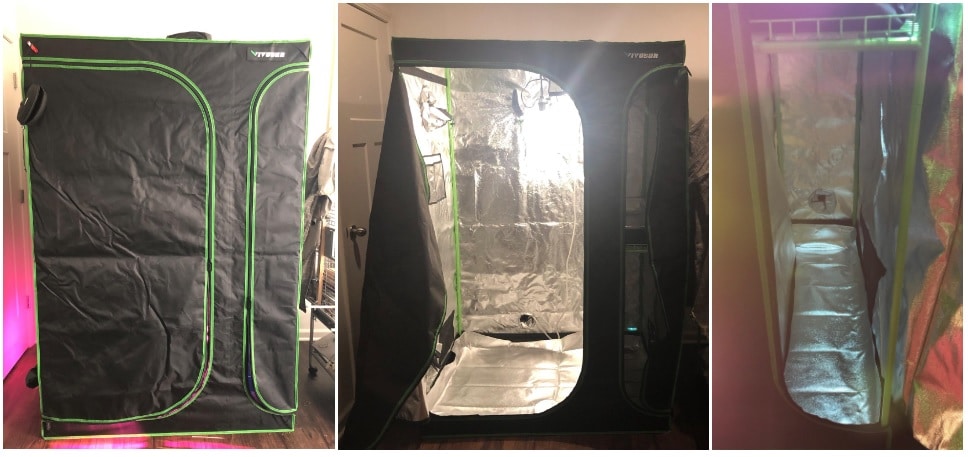
Image 5: indoor grow tent kit with two compartments, installed in a friend’s apartment, it was his birthday present, a worthy thing if you need a universal room for two types of plants at the same time. Respect Vivosan.
This innovative kit also provides bonus advantages like observation windows for easy garden viewing, 110V grounded electrical cords for safety, and double stitching on all tent corners to prevent light leakage. The complete ventilation kit, grow pots, filter socks and hanging bars deliver exceptional functionality right out of the box.
| Pros | Cons |
|---|---|
| Complete grow kit under $350 | Technical manual could be easier to understand |
| 3'x3' tent with tool-free set up | Light hanging kit not height adjustable |
| 640W LED lamp with automated timer | |
| Bonus observation window | |
| Height/humidity/temperature control |
IPOW Grow Tent Kit Complete System

The IPOW Grow Tent Bundle eliminates the complexity of piecing together separate components with an all-in-one indoor gardening package. This comprehensive kit features a high quality 96”x48”x78” grow tent powered by a commercial grade 2000 watt LED grow light.
This system can tackle any basement, garage or spare room with its heavy-duty steel frame tent containing intuitive wide doors and observation windows. The 2000W LED spans 6 by 6 feet delivering intense full spectrum light. Use the dimmable panel to customize brightness and spectrum for seedlings versus mature plants.
Climate controls take the guesswork out of maintaining optimal temp, airflow and humidity. Ducting, exhaust fan and filter scrub the air while circulation fans bathe plants evenly. This pro kit also includes a washable floor tray, hanging bars, humidifier, timer, pruning shears and transport bag — everything you need to cultivate bountiful harvests indoors.
The IPOW 2000W LED Grow Tent simplifies indoor gardening with commercial-level power and massive capacity for $800. Novices can master advanced techniques like hydroponics and autos, while experts can push limits with this 226 square foot garden. Your green thumb will thrive all year round!
| Pros | Cons |
|---|---|
| 2000 watt commercial grade LED | High price tag under $1000 |
| Massive 10' x 8' tent footprint | Large kit not ideal for small spaces |
| Complete climate control package | |
| Bonus accessories like shears, bags, etc. | |
| 5-year warranty |
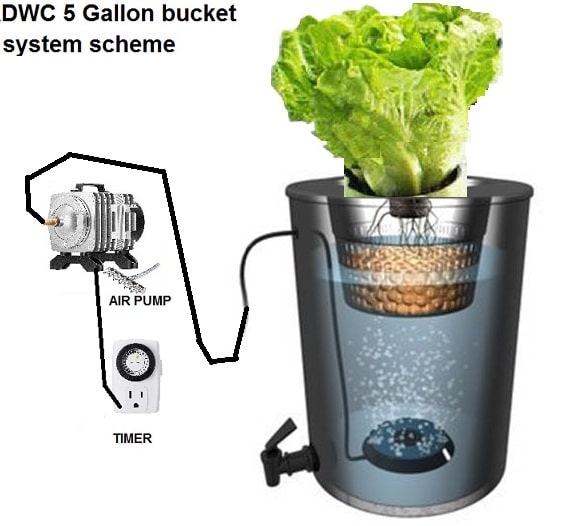
FAQ
What size grow tent kit should I get as a beginner?
If you're new to indoor gardening, we recommend starting with a small 2x2 (2’ x 2’) or 3x3 (3’ x 3’) grow tent kit. This provides between 16-36 square feet of manageable space for 1–4 plants to start out. Using too large of a tent as a beginner can make it difficult to adequately monitor and care for your plants.
The intimate footprint of a 2x2 or 3x3 tent lets you master temperature control, irrigation, pruning techniques and lighting adjustments with just a few plants before expanding. Look for small grow tent kits that include full spectrum 300-600 watt LED grow lights. An appropriate wattage LED panel provides the brightness and wavelength variety to support plants throughout the seedling, vegetative and flowering growth phases.
What components typically come in a complete grow tent kit?
Most full end-to-end grow tent kits include the central grow tent itself as well as reflective mylar sheeting or liners, heavy-duty zippers with light leakage barriers, adjustable ventilation ports and openings, durable hanging bars or racks, an appropriately powered grow light (commonly LED), inline ventilation fans + ducting, floor trays to contain spills, 24-hour timers to automate light cycles, as well as secondary accessories like humidity domes, trellis netting, grow medium, intake filters or supplements to create a fully optimized growing environment inside your tent.
Is it cheaper to get a grow tent kit or buy all components separately?
Quality all-in-one grow tent kits provide exceptional upfront value and take the hassle out of having to source each individual component like lights, tents, fans ventilation ductwork etc. on your own. Grow kit packages ensure all parts integrate properly for your tent’s footprint and height. Mismatched loose parts often require modifications or replacements to operate smoothly.
How long do grow tent kits last?
The longevity of your grow tent kit depends on purchasing quality components made of durable materials from reputable grow equipment manufacturers, as well as proper maintenance. Quality grow tents themselves are constructed using thick rip-proof canvas or vinyl exteriors that hold their shape over years of use thanks to sturdy steel support poles and corner connectors. Well-constructed tents, not thin temporary versions, can maintain functionality for 5+ years before needing replacement.
Can I use grow tent kits outdoors?
While convenient, portable and functional, grow tents are designed and optimized for controlled environment indoor use to create ideal concentrated lighting, dialed humidity, and stable air temperatures that plants thrive in. Grow tent exteriors lack adequate waterproofing or structural stability for permanent placement outdoors fully exposed to the elements.
However, you can safely use grow tents for seasonal or temporary stretches in sheltered transitional environments like garages, patios or greenhouses to take advantage of natural sunlight while monitoring conditions regularly.
